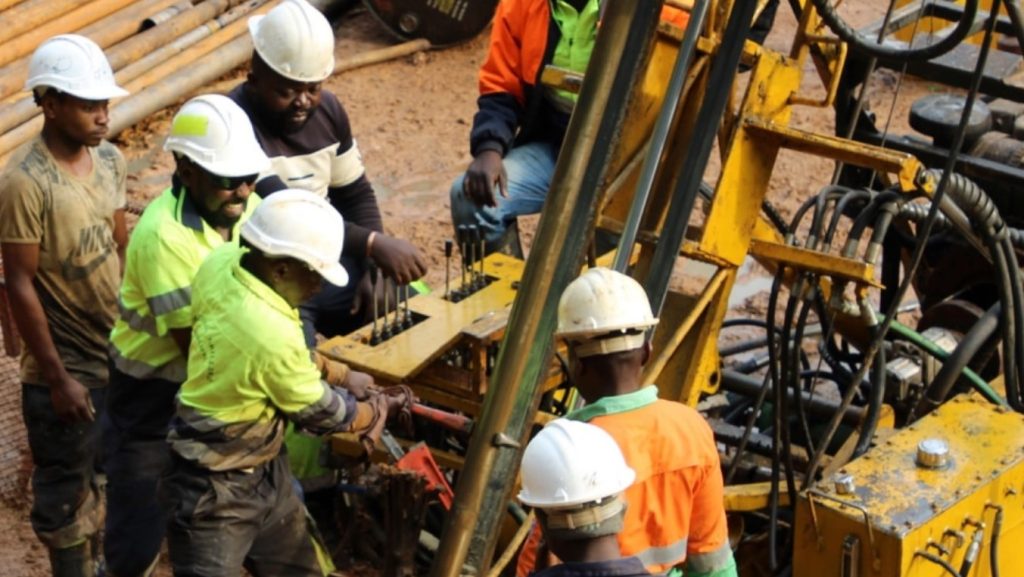Rome Resources to drill Bisie North Tin Project, DRC

Rome Resources Ltd. [TSXV-RMR; FSE-33R] reported that it has started preparations to commence extension diamond drilling on its Kalayi and Mont Agoma Prospects on PEPM 13274 and PR 15130, respectively, Democratic Republic of Congo. The company further identified a 26-metre wide zone of anomalous tin in a trench manually excavated across the high-grade tin in soil anomaly in the recent infill soil sampling program at Kalayi.
CEO and President Mark Gasson commented: “We are extremely excited about mobilizing the drill rig back to site now that we have received funding from Pathfinder Minerals. This places our technical team in a good position to confirm our model for mineralization at both prospects where all indications are that tin (Sn), copper (Cu) and silver (Ag) mineralization increases at depth at Mont Agoma and that high-grade tin mineralization can be expected over 2km at Kalayi where initial results reported grades of up to 0.5m at 11% Sn.
“Recent soil sampling at Kalayi defined a high-grade soil anomaly over 700m within the broader 2km anomaly where a single trench has defined a zone of anomalous tin over 26m wide where maximum Niton grades of 0.1% Sn over 1m were reported at surface. Drilling below the trench will define true grade and widths of the zone.
“Our technical team, which discovered and drilled out the maiden mineral resource at neighbouring Alphamin’s Mpama North tin mine, is seeing many similarities in structural controls on mineralization at Kalayi, whereas Mont Agoma is more analogous to the San Rafael tin mine in Peru, which commenced as a copper and base metal mine at surface and gradually transgressed through a copper and tin transition zone, and today is one of the world’s highest grade producing tin mines.”
Recent infill soil sampling confirmed a high-grade tin in soil anomaly (>80ppm Sn; maximum 1066ppm Sn using the Niton XRF analyzer) is associated with the highly significant drilling results of 12.5m at 1.06% Sn including 2.5m at 3.39% Sn and 0.5m at 11.7% Sn from 41.5m in KBDD003 and 2.5m at 2.60% Sn incl 0.5m at 7.15% Sn from 79m in KBDD002. Drilling to date was below limited artisanal workings.
A trench was excavated manually 100m NW of the workings along the same trend. A broad 26m wide anomalous tin zone with maximum Niton XRF values of 0.1% Sn at surface was exposed and will be tested at depth in the planned drilling program.
Additional holes have been planned to intersect the mineralization identified in the first 4 holes at deeper levels and on strike to better understand the geometry of these mineralized bodies which typically pinch and swell at Kalayi. The company will be targeting tin only at Kalayi in a similar setting to Alphamin’s deposits.
Drilling at Mont Agoma has defined a broad 250m wide zone of copper, zinc, lead, silver and tin mineralization over 300m which is open in all directions. Mineralization is focused in 3 main structures comprised of a >100m wide western zinc zone, a central copper, zinc, silver and tin zone and an eastern tin zone. Drilling to date suggests that the focus has been on the upper portion of the mineralized system with a strong likelihood for tin mineralization to dominate at deeper levels as tin crystalizes out much higher fluid temperatures therefore closer to the granitic source. Drillhole MADD010A intersected 26m at 0.2% Sn together with a significant 41m at 3.5% Cu which supports an increase in tin at depth and equates to the transition zone at San Rafael in Peru, one of the world’s largest tin producers.
The planned drilling will target tin mineralization at much deeper levels than the current drilling to confirm the model.
Rome Resources has entered into two option agreements and a binding term sheet where it has acquired 51% indirect interests in two contiguous properties situated in the Walikale District of the North Kivu Province in eastern DRC, which are collectively referred to as the Bisie North Tin Project. Rome has completed an initial phase of drilling on the project where it is responsible to fund exploration up to the completion of a definitive feasibility study.
